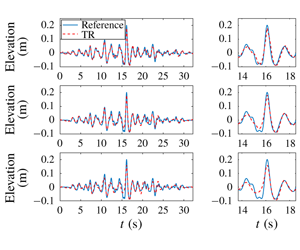Crossref Citations
This article has been cited by the following publications. This list is generated based on data provided by
Crossref.
Meng, Gao-Qing
Pan, Yu-Song
and
Xie, Xi-Yang
2020.
Deformed breather and rogue waves for the inhomogeneous fourth-order nonlinear Schrödinger equation in alpha-helical proteins.
Nonlinear Dynamics,
Vol. 100,
Issue. 3,
p.
2779.
Ransley, Edward J.
Brown, Scott A.
Hann, Martyn
Greaves, Deborah M.
Windt, Christian
Ringwood, John
Davidson, Josh
Schmitt, Pal
Yan, Shiqiang
Wang, Junxian X.
Wang, Jinghua H.
Ma, Qingwei
Xie, Zhihua
Giorgi, Giuseppe
Hughes, Jack
Williams, Alison
Masters, Ian
Lin, Zaibin
Chen, Hao
Qian, Ling
Ma, Zhihua
Chen, Qiang
Ding, Haoyu
Zang, Jun
van Rij, Jennifer
Yu, Yi-Hsiang
Li, Zhaobin
Bouscasse, Benjamin
Ducrozet, Guillaume
and
Bingham, Harry
2021.
Focused wave interactions with floating structures: a blind comparative study.
Proceedings of the Institution of Civil Engineers - Engineering and Computational Mechanics,
Vol. 174,
Issue. 1,
p.
46.
Hu, Zhe
Zhang, Xiaoying
Li, Yan
Li, Xiaowen
and
Qin, Hao
2021.
Numerical simulations of super rogue waves in a numerical wave tank.
Ocean Engineering,
Vol. 229,
Issue. ,
p.
108929.
He, Y.
Ducrozet, G.
Hoffmann, N.
Dudley, J.M.
and
Chabchoub, A.
2022.
Galilean-transformed solitons and supercontinuum generation in dispersive media.
Physica D: Nonlinear Phenomena,
Vol. 439,
Issue. ,
p.
133342.
Ma, Yuxiang
Zhang, Jie
Chen, Qunbin
Tai, Bing
Dong, Guohai
Xie, Botao
and
Niu, Xuyang
2022.
Progresses in the Research of Oceanic Freak Waves: Mechanism, Modeling, and Forecasting.
International Journal of Ocean and Coastal Engineering,
Vol. 04,
Issue. 01n02,
Draycott, S.
Stansby, P.K.
McAllister, M.L.
Davey, T.
Jordan, L.
Tosdevin, T.
and
Hann, M.
2022.
The numerical re-creation of experimentally generated nonlinear irregular wave fields using a time-reversal approach.
Applied Ocean Research,
Vol. 129,
Issue. ,
p.
103397.
Aliyar, Sithik
Ducrozet, Guillaume
Bouscasse, Benjamin
Sriram, V.
and
Ferrant, Pierre
2022.
Efficiency and accuracy of the domain and functional decomposition strategies for the wave-structure interaction problem.
Ocean Engineering,
Vol. 266,
Issue. ,
p.
112568.
Ma, Yuxiang
Tai, Bing
Xie, Botao
Xu, Tiaojian
Perlin, Marc
and
Dong, Guohai
2023.
Progress in the Research of Wave Slamming Forces on Vertical Cylinders.
Journal of Marine Science and Application,
Vol. 22,
Issue. 1,
p.
1.
Xue, Shihao
Xu, Guoji
Xie, Weibo
Xu, Lele
and
Jiang, Zexing
2023.
Characteristics of freak wave and its interaction with marine structures: A review.
Ocean Engineering,
Vol. 287,
Issue. ,
p.
115764.
Canard, Maxime
Ducrozet, Guillaume
and
Bouscasse, Benjamin
2024.
Generation of controlled irregular wave crest statistics in experimental and numerical wave tanks.
Ocean Engineering,
Vol. 310,
Issue. ,
p.
118676.
Seixas de Medeiros, João
Liu, Yuming
and
Yue, Dick K.P.
2024.
A fast high-order boundary element method for nonlinear water waves generation and propagation in large wave basins.
Computer Methods in Applied Mechanics and Engineering,
Vol. 432,
Issue. ,
p.
117396.
Chabchoub, Amin
2024.
Science and Engineering of Freak Waves.
p.
199.
He, Y.
Wang, J.
He, J.
Li, Y.
Feng, X.
and
Chabchoub, A.
2025.
Lifetime characterisation of extreme wave localisations in crossing seas.
Journal of Fluid Mechanics,
Vol. 1008,
Issue. ,
Zhuang, Yuan
Wang, Yangjun
Shen, Zhiben
Pan, Guohua
and
Wan, Decheng
2025.
Analysis of statistical characteristics of freak waves based on High Order Spectral coupled with CFD method.
Ocean Engineering,
Vol. 323,
Issue. ,
p.
120615.
Yan, Kai
Wang, Limeng
Zou, Zhili
Ma, Liang
Hu, Yuyuan
Shang, Jinwei
and
Zhou, Yalong
2025.
Experimental study on diffracted symmetric crescent waves by a circular cylinder.
Ocean Engineering,
Vol. 321,
Issue. ,
p.
120298.
Akselsen, Andreas H.
2025.
A precise conformally mapped method for water waves in complex transient environments.
Journal of Computational Physics,
Vol. 528,
Issue. ,
p.
113848.
Chen, Chun-Wei
Wisal, Kabish
Fink, Mathias
Stone, A. Douglas
and
Cao, Hui
2025.
Output control of dissipative nonlinear multimode amplifiers using spacetime symmetry mapping.
Nature Physics,
Vol. 21,
Issue. 5,
p.
839.
Duan, Shi-liang
Zhao, Bin-bin
Hayatdavoodi, Masoud
and
Zheng, Kun
2025.
Numerical simulation of three-dimensional focused waves by new deep water HLGN model.
Journal of Hydrodynamics,
Vol. 37,
Issue. 1,
p.
89.
Chen, Qunbin
and
Yang, Qi
2025.
An analytical transient solution for focused waves with phase velocity method.
Physics of Fluids,
Vol. 37,
Issue. 7,


